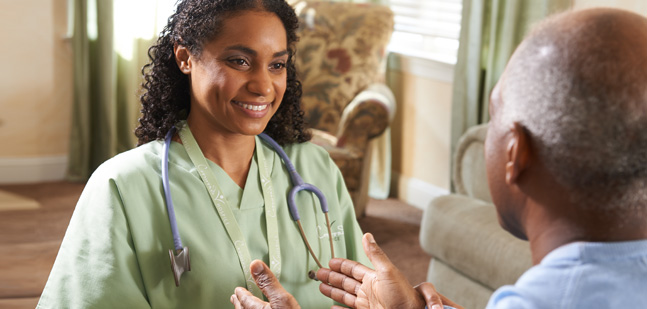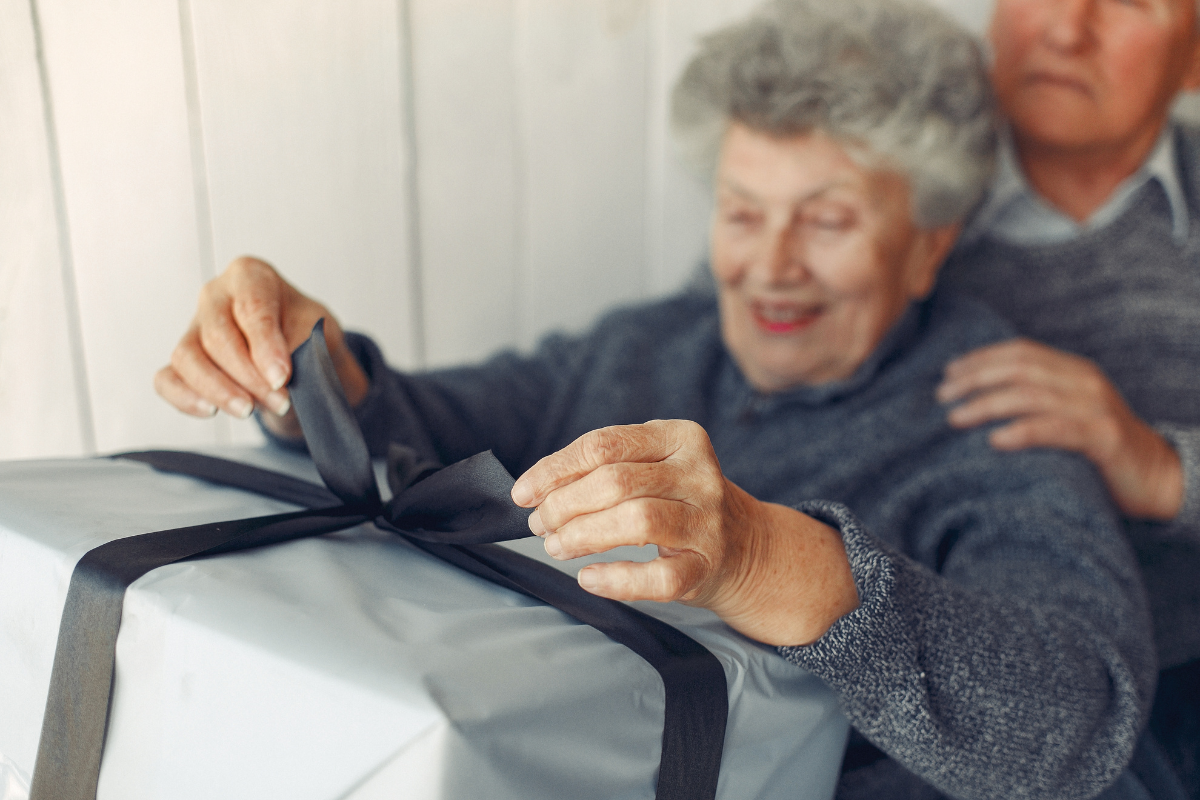Hospice Nurse Duties: Getting Too Close To a Patient?

How close is too close when it comes to getting to know your patients?
According to Lauren Maxwell, a Clinical Director for Crossroads Hospice & Palliative Care in Oklahoma City, the line can sometimes get a bit blurry since Crossroads nurses are, of course, always trying to provide the best possible care for their patients, as their hospice nurse duties advise they do.
“You do have to be careful that you don’t cross that line. It’s easy to do. The boundaries are not always as clear as we’d like to think they are,” Lauren said. “Yes, there is a social interaction with the patient, but we are there because we have to deliver care.”
Lauren came to Crossroads this past December from another administrative role because she was “looking for an ethically sound company that believes in putting patients first.”
Ensuring that appropriate boundaries remain in place is a frequent part of her role as a clinical director.
How close is too close?
At Crossroads, our patients are with us weeks, months or sometimes even years, because providing continuity of care is what we strive to do. This typically involves one small team of people caring for a patient.
“We don’t have a lot of in and outs, which is good for the patient and the family because they get used to seeing the same person, but [in theory] that can be problematic in other ways,” Lauren said.“It can start out as a caregiver and patient relationship, but if you’re not careful it can progress into something besides that.”
If you see someone two to three times a week for six months, you’re going to get to know them a little more than just as a patient, and that’s a good thing when it comes to making a patient comfortable. Sometimes, what hospice nurses do is give out their personal contact information to a patient or their family to maintain an open line of communication with them. Lauren says this is not an issue.
Unless it interferes with care.
“I have nurses who may give their personal contact info, and a patient will call them in the middle of the night. If the nurse doesn’t get the message until the next morning and the family is upset because we didn’t return their phone calls as quickly as they would have liked us to, but they didn’t call the official Crossroads line, that is a boundary that needs to be set in the beginning.”
“I don’t mind sending you a text message update every once in awhile when I see your family member,” she continued, “but if you need something from me, you need to call the Crossroads number.”
What do hospice nurses do?
Hospice nurse duties include remembering it’s tough not to always get too close and personal with a patient with whom they spend so much time.
“Nurses in general kind of have that service mentality, that we want to take care of everybody and provide for them,” Lauren said.
There always comes the time, especially in hospice, when becoming attached to a patient in this way and subsequently dealing with their loss will affect the nurse personally. That’s the more difficult boundary to define.
“It’s perfectly okay to grieve the loss of your patients and to cry,” Lauren said. “That’s part of the human emotion. Crying over the loss of a patient does not necessarily mean that boundaries have been violated. I’ve cried for patients that I only knew for five minutes. That just shows your ability to be compassionate and empathetic.
“But there’s a difference between helping your patients’ families facilitate grief, crying with them and showing them that’s okay, and a true boundary violation like throwing yourself on the patient’s bed.”
A big part of Lauren’s job is to establish processes and ensure that the necessary connections a nurse facilitates with their patients and families don’t breach the point of professionalism, always staying in touch with the nurses and their cases at any given time.
Unwritten hospice nurse duties
Lauren’s best advice for what hospice nurses do in this situation is to establish, in a gentle way, what your expectations are for your nurse-patient-family relationship up front.
“When they start to ask you personal questions, you have to gently redirect them to why they are there. They are there to take care of a patient.
“You have to be able to recognize when those lines start to happen, then pull back and redirect. It’s not something that everybody’s good at. Some people feel that they may be being rude, which they’re not, but you just have to remind them we’re not here to talk about that.”
Grief resources for hospice nurses
Not all of Crossroads’ grief resources are strictly for families. Crossroads understands that nurses and caregivers often grieve as well, since some of these connections are inevitably made.
Grief is both individual and unique to every situation. If you are a family member, caregiver, friend or even a nurse, Crossroads’ grief recovery program is here to offer the support that you need.
If you found this information helpful, please share it with your network and community.
Copyright © 2016 Crossroads Hospice & Palliative Care. All rights reserved.




